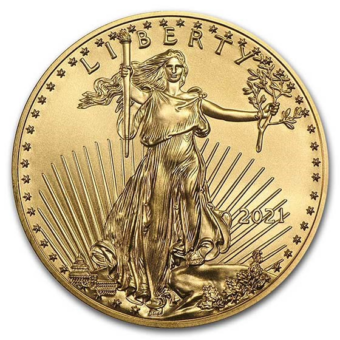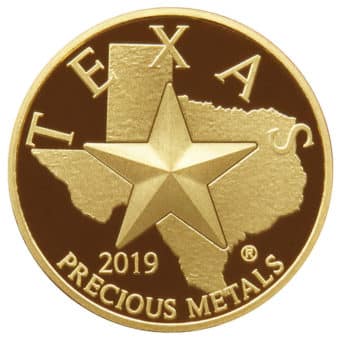A Daily Journey Through the Week's Market
Monday - 8.26.24: Gold’s feeling the Jackson Hole vibes. The yellow metal inched up $10.40 to close at $2,514.50, with silver tagging along at $29.53. Investors are still digesting the Fed’s cautious tone on inflation.
Tuesday - 8.27.24: Gold kept things steady, gaining $7.70 to hit $2,522.20. Silver followed suit, ending at $29.71. All eyes are on upcoming U.S. data to see where the Fed might go next.
Wednesday - 8.28.24: Gold took a breather, dropping $18.10 to $2,504.10, while silver slipped to $29.14. Profit-takers and a stronger dollar had something to say about the recent gains.
Thursday - 8.29.24: Gold bounced back a bit, rising $14.35 to $2,518.45, with silver closing at $29.51. Traders are playing it safe ahead of some key economic reports, weighing inflation worries against the Fed’s latest hints.
Friday - 8.30.24: Gold and silver prices are slightly weaker in early U.S. trading Friday, following mild overnight losses and a U.S. inflation report that closely matched market expectations. December gold is down $5.20 at $2,555.00, and September silver is down $0.052 at $29.525. The July personal income and outlays report showed the PCE price index steady at 2.5% year-on-year, with the core PCE index rising 2.6%, as anticipated, leading to little market reaction.
Gold Prices Under Pressure as Core PCE Rises 0.2% in July
The Latest:
Gold prices continue to face technical selling pressure as investors react to modest inflation data. December gold futures last traded at $2,552.70 an ounce, down 0.30% on the day.
By the Numbers:
- Core PCE: Rose 0.2% in July, in line with expectations.
- Annual Inflation: Held steady at 2.6% for the third consecutive month.
- Headline PCE Inflation: Also up 0.2% for July, with a 2.5% annual increase, unchanged from June.
Why It Matters:
This inflation data gives the Federal Reserve a potential green light for a new rate-cutting cycle next month. Markets have already priced in a 25-basis-point cut, with a 30.5% chance of a more aggressive 50-basis-point move.
What's Next:
The Fed's decision may hinge on next Friday’s non-farm payrolls report, and further economic data will shape the central bank's approach to rate cuts.
Gold Prices Hold Steady as U.S. GDP Grows 3.0% in Q2
What's happening:
The U.S. economy continues to surprise, posting a solid 3.0% growth in GDP for the second quarter, according to the Bureau of Economic Analysis. Despite this strong economic data, gold prices remain steady, consolidating near record levels.
The details:
- The second-quarter GDP growth was revised up from an initial estimate of 2.8% and marks a significant increase from the 1.4% growth in Q1.
- The rise in GDP was driven by consumer spending, private inventory investment, and nonresidential fixed investment, though these gains were partially offset by a decline in residential fixed investment.
Inflation insights:
- The GDP Price Index rose by 2.5% in Q2, slightly higher than the initial estimate of 2.3%.
- Core Personal Consumption Expenditures (PCE) Price Index increased by 2.8%, down from the earlier estimate of 2.9%, indicating persistent inflationary pressures.
Market reaction:
- Despite the strong GDP data, gold prices remained largely unaffected. December gold futures were last traded at $2,543.20 per ounce, up 0.21% on the day.
- Adam Button, Head of Currency Strategy at Forexlive.com, noted that the robust GDP report could strengthen the U.S. dollar, which might put some pressure on gold prices moving forward.
Why it matters:
- The strong economic performance makes it harder to justify significant interest rate cuts, as the data reflects a resilient economy with solid consumer spending. This could influence the Federal Reserve's monetary policy decisions in the coming months.
TD Securities’ Ghali warns: Gold Market Risks Grow As Trade Gets Crowded
What's happening:
The long gold trade is more crowded than ever, with mounting risks of a significant price pullback despite a strong macro environment and upcoming Federal Reserve rate cuts, according to Daniel Ghali, Senior Commodity Strategist at TD Securities.
The details:
- Ghali highlights that macro fund positioning in gold has reached its highest levels since the depths of the pandemic, matching peaks seen in September 2019 and July 2016.
- This surge in positioning, combined with extreme short positioning marking past lows in 2018 and 2022, signals a growing risk of correction.
- "CTAs are max long, and Shanghai traders' net length is nearing record highs," Ghali noted, adding that silver is also at risk of selling activity unless prices break above $31.5/oz.
The warning:
- Ghali stresses that downside risks are now more potent than ever. "The ship is crowded. It has scarcely been as crowded as it is today. Do you have a slot secured on the lifeboat?" he asks.
The bigger picture:
- In a follow-up note, Ghali described gold markets as "unanimously bullish" with short positions near ten-year lows. However, he cautioned that the current setup is more consistent with deep recession cuts than a return to normalcy.
- Despite strong fundamentals, including slowing growth, sticky inflation, and currency devaluation, Ghali sees significant near-term risks tied to the crowded trade.
BRICS: 126 Nations Eye Ditching the US Dollar
What's happening:
Around 126 nations are set to attend the BRICS Municipal Conference, signaling a growing interest in joining the bloc and moving away from reliance on the US dollar. The conference, held in Moscow from August 27-28, is attracting developing countries eager to strengthen their local currencies and reduce dependency on the dollar for trade.
The details:
- The BRICS VI International Municipal Forum (IMF) will focus on 13 key areas, including international cooperation, digital technologies, energy, healthcare, and urban infrastructure.
- The event will feature over 70 business sessions and exhibitions, including “DIGITECH+” and “Mechanical engineering: strategies and technologies.”
The bigger picture:
- While only 26 nations have formally applied to join BRICS, around 21 more have expressed informal interest, with many others watching closely.
- Paul Frimpong, Founder of the Africa-China Centre for Policy Advisory, confirmed that over 40 countries are interested in joining BRICS, driven by a shared desire to create a more equitable global system.
Why it matters:
- The growing interest in BRICS is part of a larger movement towards de-dollarization, as more countries seek to reduce their reliance on the US dollar.
- This conference could be a turning point for the bloc as it prepares for its 16th summit in Kazan, Russia, this October. Discussions are expected to focus on the US dollar, the potential for a new BRICS currency, and the bloc’s future expansion.
Bitcoin on the Verge of Parabolic Surge, Says Analyst
What's happening:
Bitcoin (BTC) may be on the brink of entering a parabolic phase, according to a crypto analyst known as Rekt Capital. The analyst suggests that Bitcoin is in a re-accumulation phase, setting the stage for a significant price surge.
The details:
- Rekt Capital, speaking to his 84,700 YouTube subscribers, indicates that Bitcoin is "getting really close to entering the parabolic phase of the cycle."
- He predicts that Bitcoin could break out above its current all-time high of approximately $73,800 within the next few weeks, based on historical patterns.
The timeline:
- The analyst points out that typically, 214 days after a halving event, Bitcoin begins a new uptrend and approaches new highs. According to his analysis, Bitcoin is just over two months away from reaching new all-time highs and entering a phase of price discovery.
- Historical data suggests that the peak of this bull market cycle could occur around September 2025. Previous cycles have seen Bitcoin reach its bull market peak 518 to 546 days after a halving.
Current status:
- As of now, Bitcoin is trading at $59,984, with the potential for a significant rally in the coming months if historical trends hold true.
Why it matters:
- If Bitcoin follows its historical pattern, investors could see substantial gains as the cryptocurrency enters its parabolic phase. The timeline provided by Rekt Capital offers insight into when this potential breakout might occur, giving traders a window to prepare for the next major price surge.
Next Week’s Key Events
Monday, September 2
- Labor Day holiday: None scheduled
Tuesday, September 3
- 9:45 am ET: S&P Final U.S. Manufacturing PMI (August)
- 10:00 am ET: Construction Spending (July)
- 10:00 am ET: ISM Manufacturing (August)
Wednesday, September 4
- 10:00 am ET: JOLTS (July)
Thursday, September 5
- 8:15 am ET: ADP Employment (July)
- 8:30 am ET: Initial Jobless Claims (August 31)
- 9:45 am ET: S&P Final U.S. Services PMI (August)
- 10:00 am ET: ISM Services (August)
Friday, September 6
- 8:30 am ET: Employment Situation Summary (Jobs Report) (August)
- 8:45 am ET: New York Fed President Williams speaks
IMPACT ON PRECIOUS METALS MARKETS
S&P Final U.S. Manufacturing PMI (August):
This report provides insights into the health of the manufacturing sector. A stronger-than-expected PMI could signal economic strength, potentially leading to higher interest rates, which often negatively impact precious metals prices as they become less attractive compared to interest-bearing assets. Conversely, a weaker PMI could support gold and silver prices as it may signal economic weakness.
Construction Spending (July):
Construction spending reflects the level of economic activity in the construction sector. Higher spending can indicate economic growth, possibly leading to higher interest rates and a stronger dollar, which can be bearish for precious metals. Lower spending can have the opposite effect, supporting precious metals prices.
ISM Manufacturing (August):
Similar to the PMI, the ISM Manufacturing report is a key indicator of economic activity. Strong manufacturing data can lead to a stronger dollar and higher interest rates, which are typically bearish for precious metals. Weak data could support metals prices as a safe-haven investment.
JOLTS (July):
The Job Openings and Labor Turnover Survey (JOLTS) provides information on labor market dynamics. A robust labor market could increase expectations of rate hikes, which may negatively impact precious metals. Conversely, weaker labor market data might boost precious metals as a hedge against economic uncertainty.
ADP Employment (July):
This report estimates the change in nonfarm private sector employment. Strong employment growth can lead to higher interest rates and a stronger dollar, which may weigh on precious metals prices. Weak employment data can boost demand for precious metals as a safe haven.
Initial Jobless Claims (August 31):
This report measures the number of new claims for unemployment benefits. A rising trend in jobless claims can signal economic trouble, potentially supporting precious metals as investors seek safe-haven assets. A decrease in claims may have the opposite effect.
S&P Final U.S. Services PMI (August):
This report measures the performance of the services sector. Like the manufacturing PMI, a strong reading can be bearish for precious metals due to its potential impact on interest rates and the dollar. A weak reading could provide support for metals prices.
ISM Services (August):
Similar to the services PMI, this report is a leading indicator of economic health in the services sector. Strong data could lead to expectations of tighter monetary policy, which can weigh on precious metals. Weak data may boost demand for metals.
Employment Situation Summary (Jobs Report) (August):
This is one of the most important economic reports, providing a comprehensive look at the labor market. Strong job growth can lead to higher interest rates and a stronger dollar, which are typically bearish for precious metals. Weak job data can have the opposite effect, supporting metals prices as investors seek safety.
New York Fed President Williams speaks
Comments from a key Fed official can influence market expectations regarding interest rates. Hawkish comments may pressure precious metals by signaling higher interest rates, while dovish comments can support metals by suggesting a more accommodative monetary policy.






















